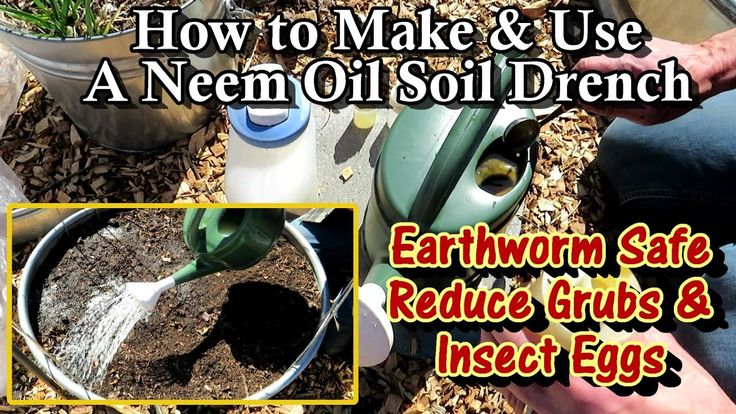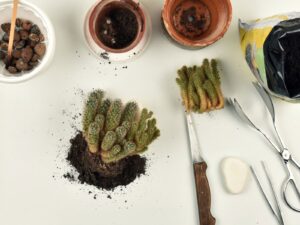Neem oil is a versatile organic pesticide derived from the seeds of the Neem tree. Its efficacy against a variety of pests makes it a popular choice for gardeners and farmers alike. When used correctly as a soil drench, neem oil can contribute significantly to maintaining healthy plants by targeting soil-dwelling pests such as grubs and larvae. To achieve optimal results, it is crucial to understand how to mix neem oil for a soil drench properly. This article will guide you through the process to ensure that you utilize this natural solution efficiently and effectively.
Understanding Neem Oil: Its Benefits and Mechanism
The initial step towards effective use of neem oil is to understand its composition and benefits. Neem oil contains active compounds such as azadirachtin, which interfere with the life cycles of insects. This disruption results in inhibited growth, reduced egg-laying, and ultimately, the demise of pest populations. When administered as a soil drench, neem oil not only targets existing pests but also imparts protective qualities to the plant, fortifying it against future infestations. This dual action makes neem oil an invaluable tool in sustainable gardening practices.
Preparation of the Soil Drench Solution
Mixing neem oil for a soil drench is relatively straightforward but requires precise measurements to ensure efficacy without harming beneficial soil organisms. Here’s how to prepare your neem oil soil drench:
Gather Your Materials:
- Neem oil: Ensure it is cold-pressed and of high purity.
- Water: Use distilled or rainwater for best results.
- Liquid soap: A mild, biodegradable soap acts as an emulsifier.
- A mixing container: Ideally, a clean spray bottle or a large jug.
Mixing Proportions:
The ideal concentration for neem oil drench is typically 2% neem oil solution. To achieve this, combine:
- 2 tablespoons of neem oil (about 1 ounce) for every 1 gallon of water.
- 1 teaspoon of liquid soap to facilitate emulsification.
Mixing Instructions:
1. Begin by adding neem oil to your mixing container.
2. Follow with the liquid soap and then slowly introduce the water.
3. Stir the mixture vigorously until it achieves a homogenous consistency. This step is crucial as it ensures that the neem oil is adequately emulsified and evenly distributed within the water.
4. If using a spray bottle, shake it gently to mix without excessive foam.
Testing and Storage:
Before applying to your entire garden, it is advisable to conduct a small patch test. Apply the drench to a select area and observe any adverse reactions in the plants over 48 hours. If no issues arise, proceed with the application. Leftover solution can be stored in a cool, dark place for up to one month. Exposure to light and heat can degrade the quality of neem oil, reducing its effectiveness.
Application Techniques for Neem Oil Soil Drench
Once mixed, the next crucial step involves applying the neem oil solution effectively. Here are some best practices for application:
Timing is Key:
The most effective time to apply neem oil as a soil drench is early in the morning or late in the evening. This is when the temperatures are cooler, minimizing evaporation and maximizing the absorption of the solution by the soil.
Target the Root Zone:
Focus your application on the root zone of the plants. This is where pests generally congregate and where beneficial microorganisms thrive. Aim to thoroughly saturate the soil around the base of the plants. This helps in allowing the active ingredients to penetrate deep into the soil, creating a barrier against pests.
Reapplication Schedule:
For maximum effectiveness, reapply the soil drench every 2-4 weeks, especially during peak pest seasons. This ongoing treatment will help maintain a healthy environment for your plants while keeping pest populations at bay. Regular monitoring of pest activity will guide you in tailoring your application schedule.
Addressing Common Concerns
There are several buyer concerns associated with the use of neem oil as a soil drench, primarily regarding its safety and environmental impact. It is essential to note that neem oil is generally considered non-toxic to humans, pets, and beneficial insects when used correctly. However, over-application or improper dilution can lead to phytotoxicity, characterized by leaf burn or plant stress.
It is equally pertinent to balance neem oil application with the presence of beneficial microbes in the soil. While neem oil targets harmful pests, it should be used judiciously to avoid disrupting the balance of beneficial organisms that contribute to the health of your garden ecosystem.
Conclusion
Mixing and applying neem oil for a soil drench is not merely a garden chore; it is an art that, when mastered, aids in the sustainable management of pests. By understanding the properties of neem oil, preparing the mixture correctly, and applying it thoughtfully, gardeners can enhance plant health and productivity. A commitment to careful application and ongoing monitoring ensures that your plants remain vibrant and pest-free, allowing you to cultivate a flourishing garden with confidence.





Leave a Comment